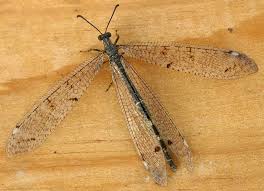Antlions:

Researchers recently spotted a large-sized adult antlion, Palpares contrarius, that resembles a dragonfly for the first time in Tamil Nadu on the Madras Christian College (MCC) campus.
- Antlions are insects belonging to the order Neuroptera. They are classified in the family Myrmeliontidae.
- They are named for the predatory nature of the larvae, which commonly trap ants and other small insects in pits dug into the ground.
- Antlions are found throughout the world, primarily in dry, sandy regions.
- It is very difficult to spot them during the day and can be spotted at night near illuminated spots.
- Adult antlions resemble damselflies, but they have softer bodies, a lacy wing pattern, and long clubbed antennae.
- The bodies of antlions are long and slender and grayish in color.
- The wings are generally clear, but some species have spots on their wings.
- Antlions are weak fliers and can be found at night near lights.
- They come in various shapes and sizes, with larvae typically measuring from a few millimeters to several centimeters, depending on the species.
- Antlion larvae have rounded bodies with long sickle-shaped jaws. The larvae are found at the base of cone-shaped pits in sandy areas.
- They usually remain in the larval stage for one to two years, depending on the species.
- Once they pupate, they require up to one month to complete their development. Adult antlions survive for one to two months.
- Antlions are harmless and cause no damage to flowers, people, or structures.
- They are highly beneficial and feed on ants and other insects that fall into their traps.




